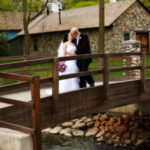You are on your way to a meeting. You are running late. Your hope is that you will find a great parking space in front of the meeting place. That will save you lots of time. As you approach your destination there are no parking places to be found. As you approach the front of the building, a parking spot opens, but the problem is you have to parallel park in order to take advantage of it. “I can’t do it you say to yourself. I have never been able to parallel park.” So you drive past that prime parking spot and search for easier parking.
Parallel parking is not difficult. It is the fear of the car in the front that disturbs most would be parallel parkers. Parallel parking requires patience and good judgment. Here are a few tips;
Be extra sure that your vehicle will fit into the parking spot that you have selected. This may require a twice over sight and vehicle measurement. The first measurement, sight, is as you are approaching the intended parking spot. This is an observatory estimation measurement. The second measurement, vehicle, is an actual measurement. It occurs as you slowly drive by the spot. When you are parallel to the opened parking space do a quick glance to see if there is at least one foot of clearance in the front and the rear of your vehicle and the vehicles you will be parallel parking between.
When you have confirmed the measurement rule and are sure your vehicle will fit safely into the designated parking stall, pull up along side of the front vehicle. Front as in when you have completed parking this vehicle will be located in front of your vehicle. Allow a minimum of 24 to 30 inches between the side of your vehicle and the one you are pulling along side of. Pull forward, slightly ahead of this vehicle. When your car’s rear bumper is in alignment with the rear tires of this vehicle you are ready to begin your parallel parking maneuver.
Now it is time to begin the parallel maneuver. Do not dry steer, that is, begin turning the steering wheel when your vehicle is not moving. Begin to reverse slowly and as soon as the rear of your vehicle passes the rear of the front vehicle begin turning your steering wheel in one smooth motion towards the curb to place your vehicle at a 45 degree angle to the curb. Dry steering may cause you to misjudge the angle, forcing you to have to begin this maneuver over again.
Once the front bumper of your car has passed the rear bumper of the front car, begin turning your steering wheel away from the curb so that the front of your car begins to enter the parking stall and the trunk and rear window of your car begin to align with the front of the car in the rear. Take a precautionary look up front to confirm that the front of your vehicle has thoroughly cleared the rear of the front vehicle. When that has been confirmed redirect your focus and your eyes on the rear of your vehicle and the front of the vehicle behind you. Continue reversing slowly and begin turning your steering wheel so that your vehicle begins straightening out and becomes parallel with the curb. When your rear window is square with the windshield of the vehicle in the rear, you have parallel parked.
With practice you will improve. The biggest problem most people have with parallel parking is misjudging the angle at which they first enter the parking space. This is usually because they over steer or cut too hard, or do not enter the parking space at a 45 degree angle. For those who have trouble visualizing a 45 degree angle, think of a picture frame; the corners where the top and bottom sections of the frame join up with the right and left sides of the frame is a 45 degree angle. Now there are no more excuses for passing up that prime parking space because now, you do know how to parallel park.
Resource: Personal Experience


